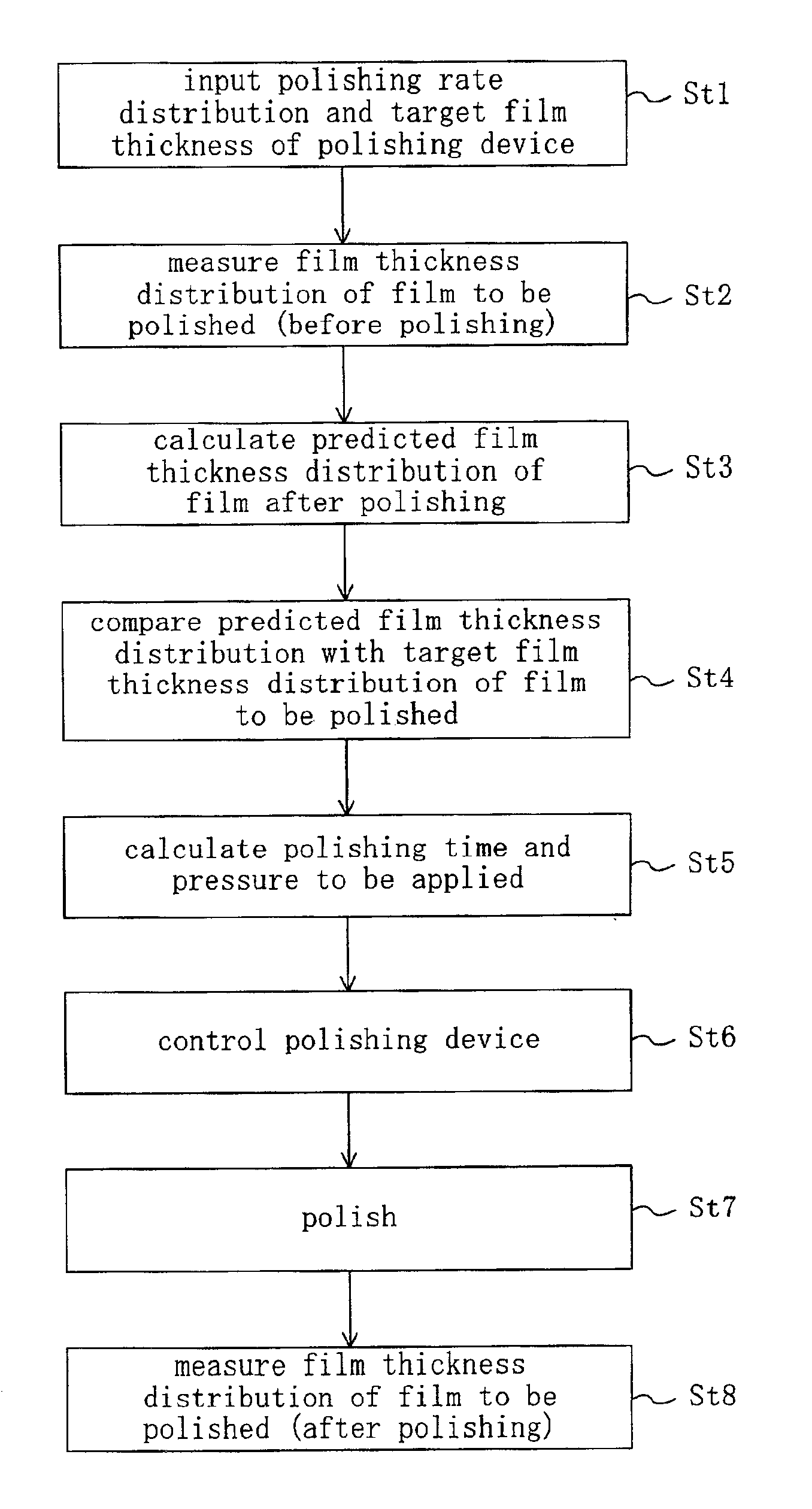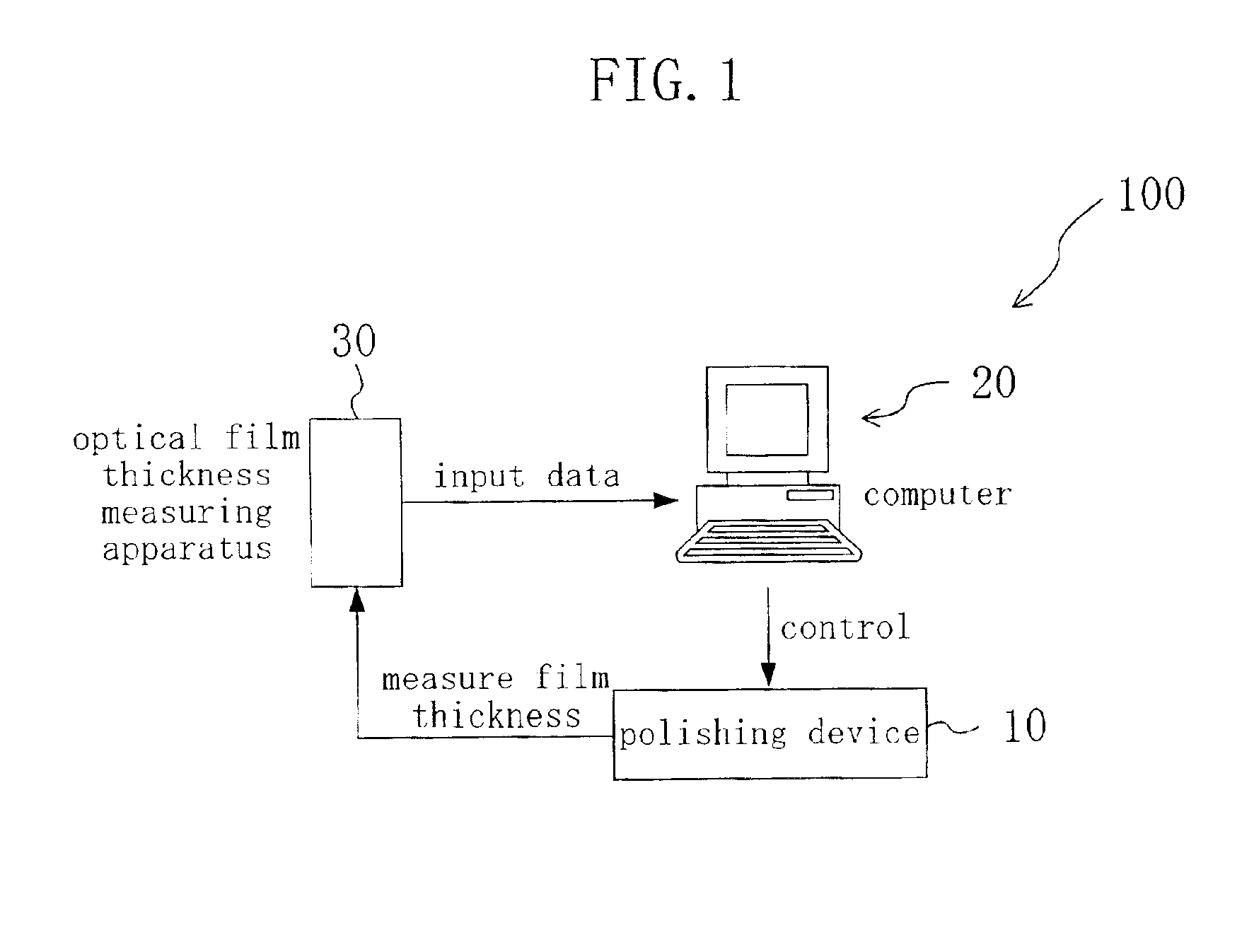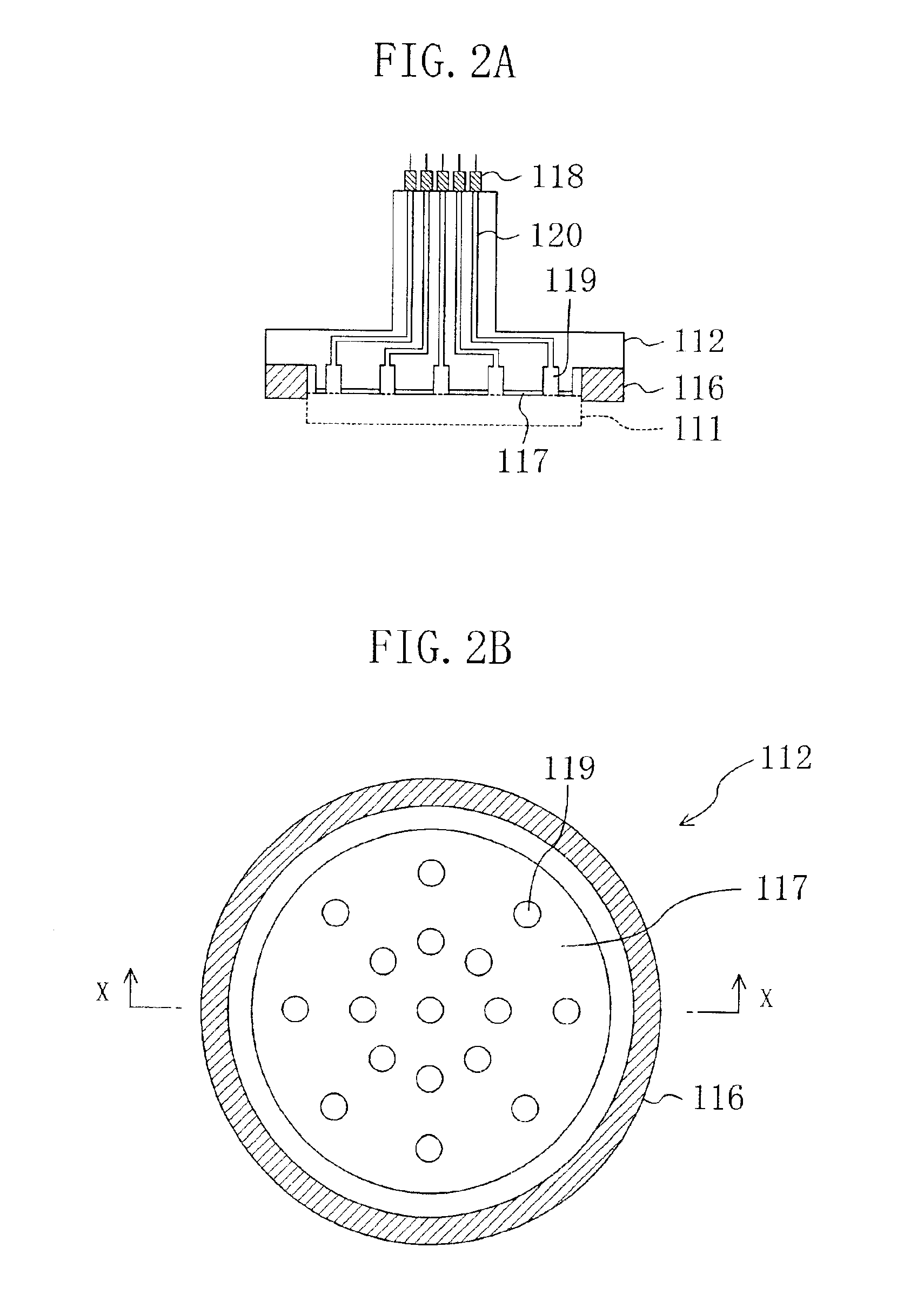Polishing method, polishing system and process-managing system
a polishing system and polishing technology, applied in the field of planarization during, can solve the problems of uneven surface of semiconductor devices, increased process steps in semiconductor manufacturing processes, and more complex processes, and achieve the effects of stable polishing, accurate prediction of film thickness distribution, and precise film thickness control
- Summary
- Abstract
- Description
- Claims
- Application Information
AI Technical Summary
Benefits of technology
Problems solved by technology
Method used
Image
Examples
embodiment 1
[0059]FIG. 1 schematically shows a polishing system 100 of this embodiment. FIG. 2A is a cross-sectional view of the carrier head that is employed in this embodiment, and FIG. 2B shows the bottom surface of the carrier head shown in FIG. 2A. It should be noted that FIG. 2A is a cross-sectional view taken along the X—X line shown in FIG. 2B.
[0060]As shown in FIG. 1, the polishing system 100 of this embodiment is provided with a polishing device 10, a computer 20 for controlling the polishing device 10, and an optical film thickness measuring apparatus 30.
[0061]The polishing device 10 has substantially the same configuration as the conventional polishing device 200, except that the carrier head 112 of the polishing device 10 of this embodiment is configured differently than that of the conventional example.
[0062]As shown in FIGS. 2A and 2B, the carrier head 112 is provided with a retainer ring 116, a wafer holding seal 117, a plurality of apertures provided in the bottom surface of th...
embodiment 2
[0083]In this embodiment, a specific example of the configuration of the polishing system100 of Embodiment 1 is described with reference to FIG. 6.
[0084]The polishing system 100 includes a polishing block A, in which the polishing device 10 has been provided, a measuring block B for measuring the film thickness of the film to be polished on the wafer that is polished by the polishing device 10, a control block C for controlling the polishing device 10, and a holding block D for holding wafers that need to be polished. The polishing block A is separated from the other three blocks by a wall 123 made of a transparent plastic.
[0085]The polishing device 10 that is provided in the polishing block A is the polishing device that was described in Embodiment 1.
[0086]The optical film thickness measuring apparatus 30 for measuring the film thickness of the film to be polished on the wafer that is polished by the polishing device 10 is provided in the measuring block B. The optical film thickne...
embodiment 3
[0096]In Embodiments 1 and 2, the polishing device 10 is given a configuration in which the carrier head shown in FIGS. 2A and 2B is employed to independently control, at each specific region, the force at which the wafer 111 is pressed against the polishing pad 110, but as long as the polishing device 10 has a configuration where a changeable pressure can be independently applied to a plurality of regions on the wafer 111, it can be configured differently and still achieve a similarly high degree of planarization. In this embodiment, one example of a modified polishing device is described with reference to FIG. 1.
[0097]FIG. 7A is a lateral view of the polishing device of this embodiment, and FIG. 7B is a top view of the polishing device of this embodiment.
[0098]As shown in FIGS. 7A and 7B, a polishing device 10′ of this embodiment is provided with two rollers 159, a polishing belt 160 wound around the two rollers, a carrier head 162, an air platen 163 provided in opposition to the ...
PUM
 Login to View More
Login to View More Abstract
Description
Claims
Application Information
 Login to View More
Login to View More - R&D
- Intellectual Property
- Life Sciences
- Materials
- Tech Scout
- Unparalleled Data Quality
- Higher Quality Content
- 60% Fewer Hallucinations
Browse by: Latest US Patents, China's latest patents, Technical Efficacy Thesaurus, Application Domain, Technology Topic, Popular Technical Reports.
© 2025 PatSnap. All rights reserved.Legal|Privacy policy|Modern Slavery Act Transparency Statement|Sitemap|About US| Contact US: help@patsnap.com



